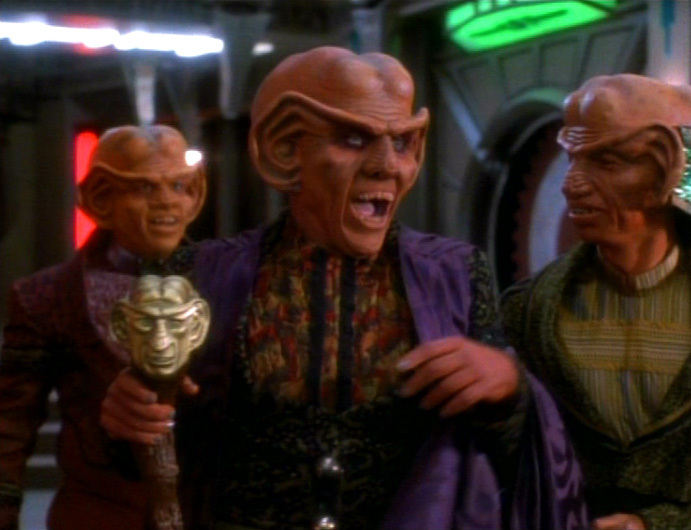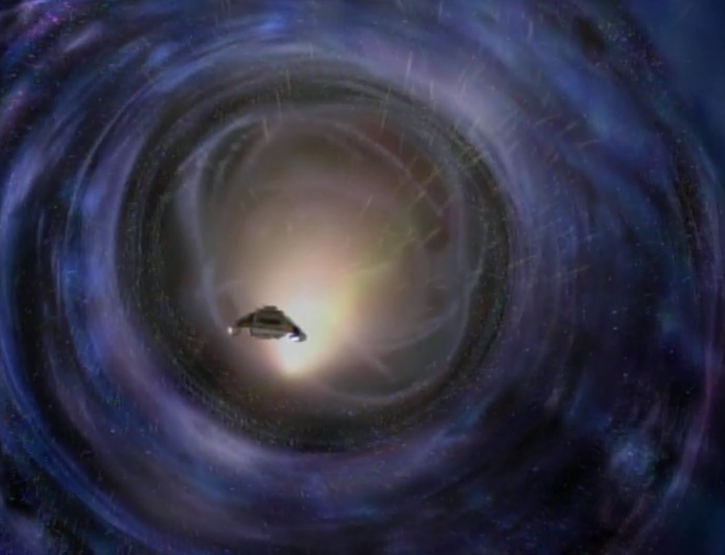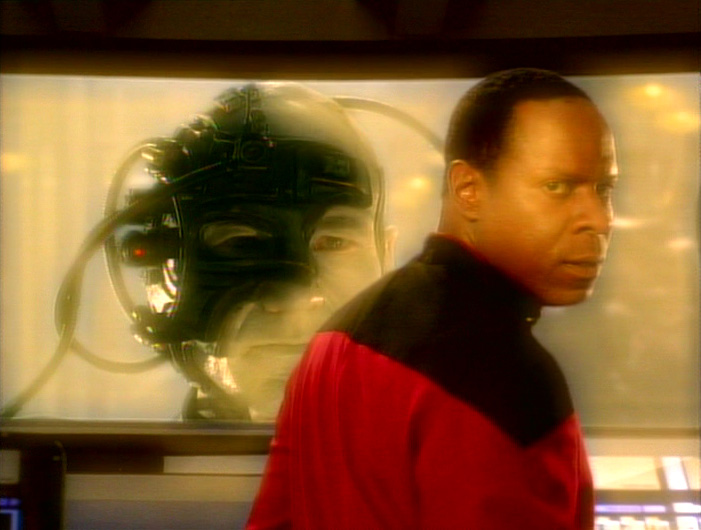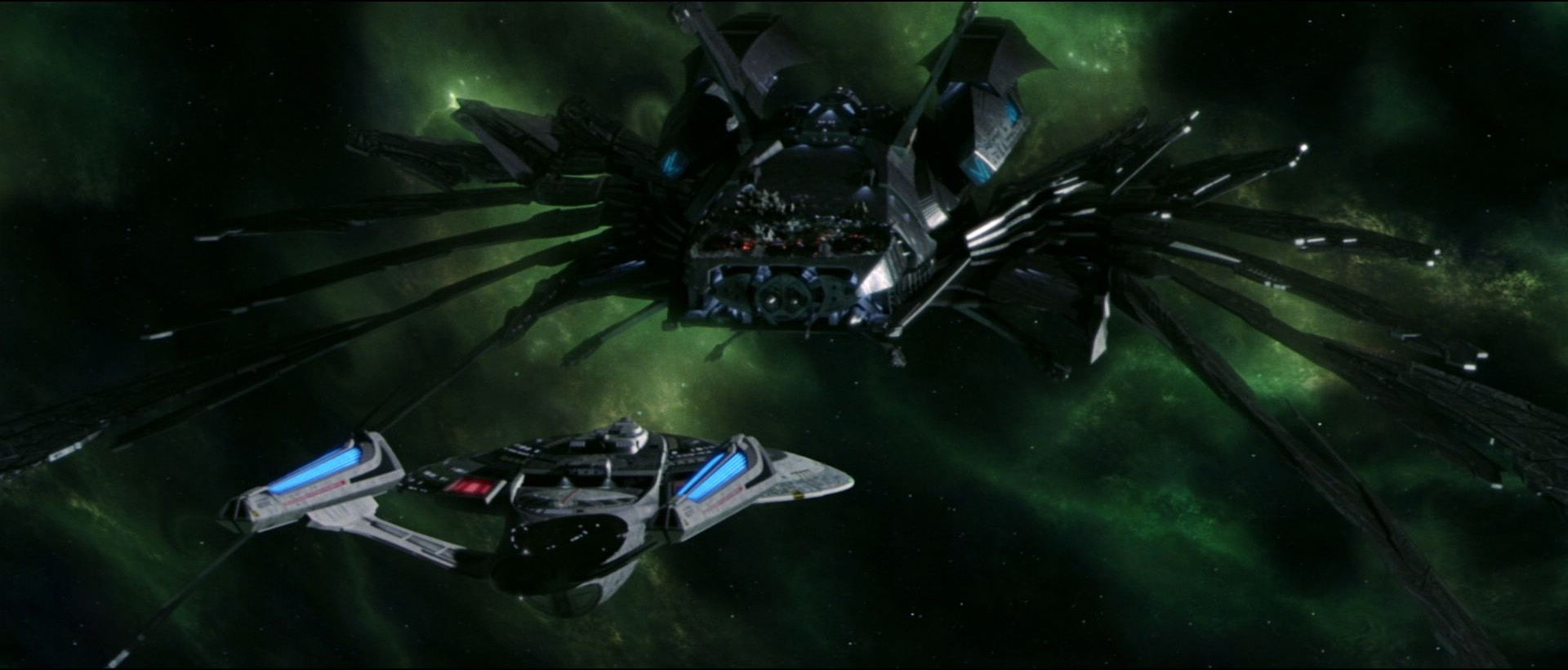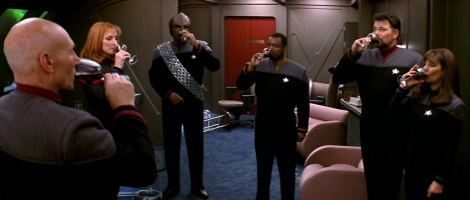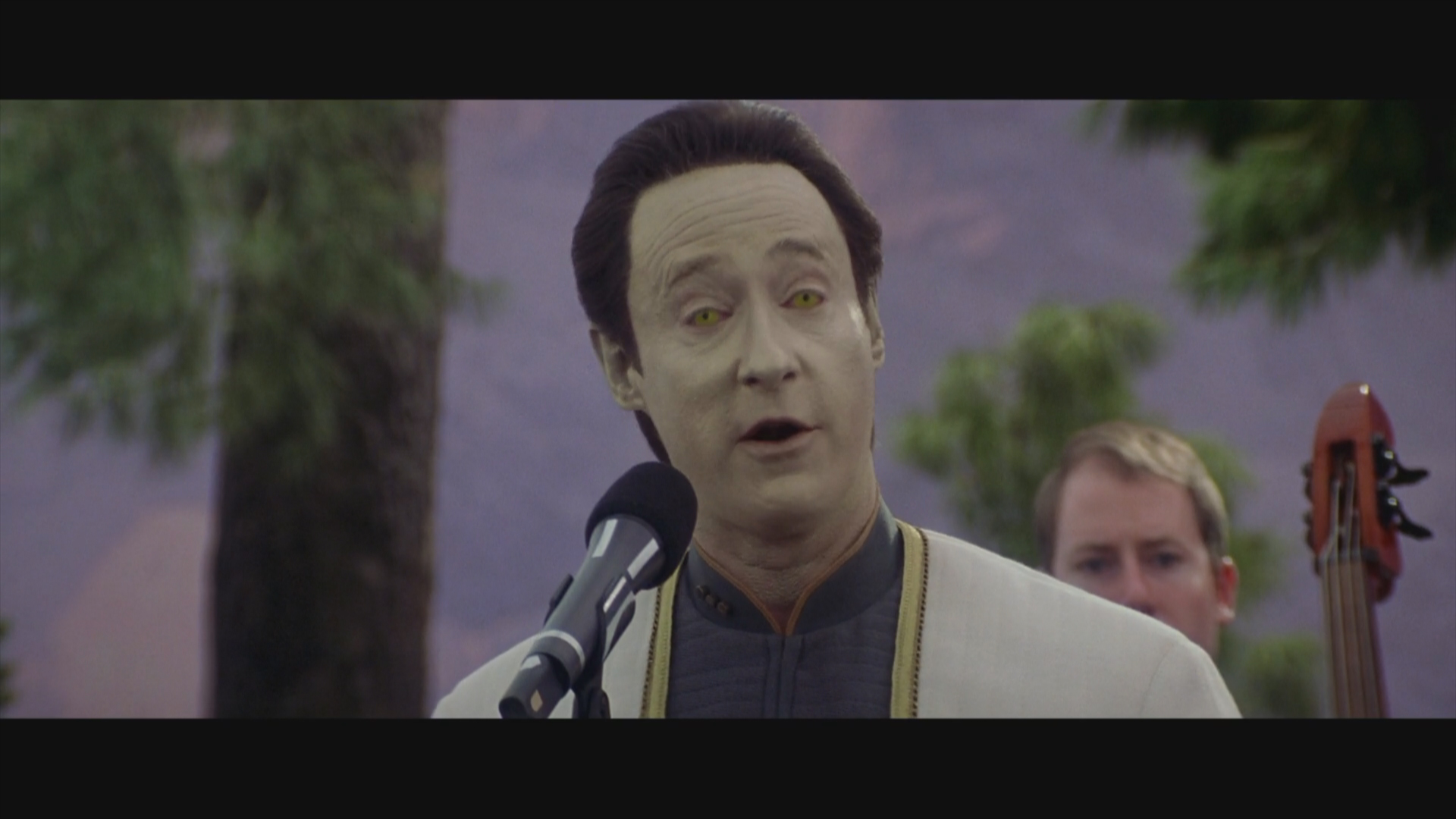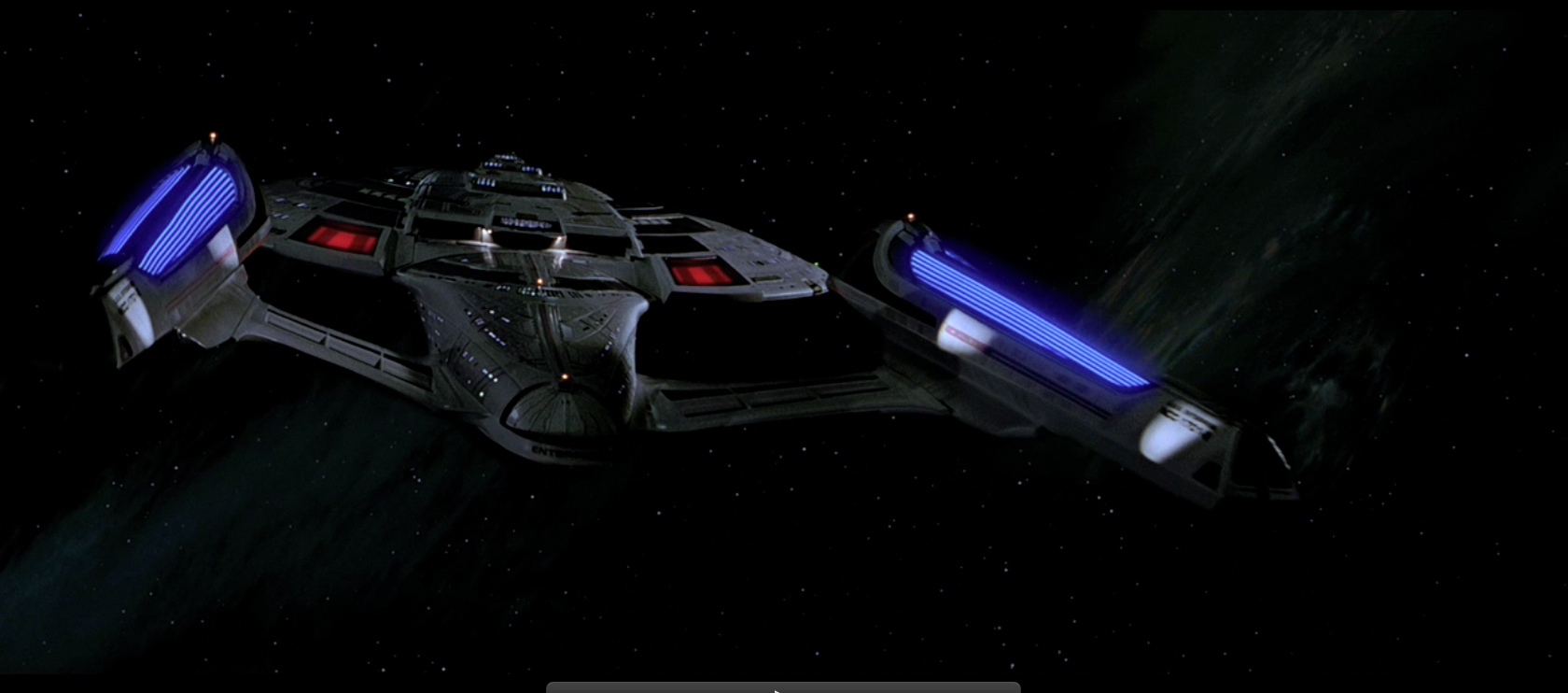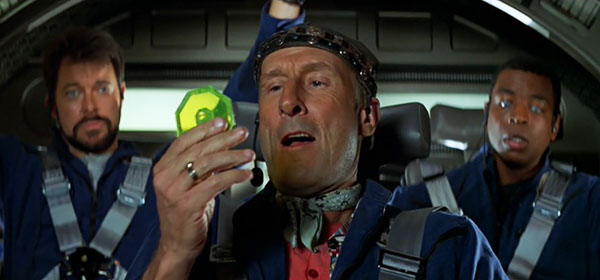
A dust up between the Federation and the Bajorans ensues when Keiko O’Brien (Rosalind Chao) starts teaching Bajoran children at the station’s school that the wormhole is not (explicitly) the Bajorans’ celestial temple. Orthodox Vedek Winn (Louise Fletcher) shows up and starts making noise in her bid to become the next kai, after the previous one’s death earlier in season one. Her chief rival Vedek Bareil (Philip Anglim) comes to the station to help mediate, and Winn gets O’Brien’s Bajoran assistant, Neela (Robin Christopher) to make an attempt on Bareil’s life. O’Brien figures out what’s happening in time to alert Sisko, who stops Neela. Kira, who had supported Winn, confronts her, accusing her (rightly) of plotting the whole thing to get Bareil out of the way — though Neela later says she acted alone. This sets the stage for Winn to be a manipulative power player and enemy to the Federation going forward. The event also has the effect of pushing Sisko and Kira together after a season of (mostly) acrimony.
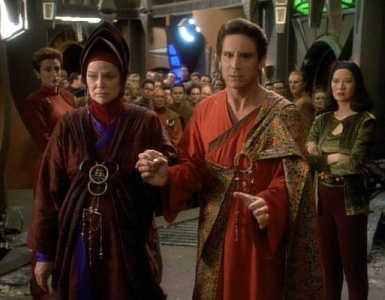
Why it’s important
Early DS9 focused much of its time on turmoil involving the Federation and Bajor. This is likely the best example, as it shows the schism between the spiritual Bajorans and the non-spiritual Federation. It also partly explains the factions forming on Bajor that take effect in the three-parter that begins the second season. We won’t review those three episodes — though they are good — because the actions in them really don’t have consequences. The characters and the extremist group behind it never appear again, except for Winn and Bareil, who are introduced here.
Winn, of course, is a HUGE character in the DS9 mythos, as we’ll see going forward. So, to a lesser extent, is Bareil.
Thematically, this episode shows one of DS9’s strengths — the ability to slowly and gradually depict an evolving situation over several years. The Federation/Bajoran turmoil was personified by Sisko and Kira and the quiet realization that the two of them have at the end of the episode is an important development.
What doesn’t hold up
Really, Keiko O’Brien is the biggest problem in this episode. It’s hard to imagine that she would be so hard-headed AND oblivious to the fact that her secular teachings could cause problems among a spiritual people. In “Emissary”, we learn that the only thing that binds the Bajoran people together is their religion. Even if Keiko disagreed with Winn, her shock at what happened was an example of poorly done exposition (or bad acting, anyway).
The only other problem is that the Bajoran issues seen here as a big damn deal mostly go away in later DS9. Essentially, the creators pivoted from the Bajoran storylines in season two (when the series wasn’t doing well) and brought in the the Maquis, the Dominion and (later) the Klingons. That probably was a smart idea for the sake of the series — but it’s too bad that we see SO little of the Bajoran turmoil going forward (when so much time is wasted on things like Ferengi nonsense or Lwaxana Troi pining for Odo). Other than Sisko’s role as the Emissary, Winn’s backbiting and the eventual rise to power of Kira’s resistance buddy Shakaar in season three, the Bajorans seem pretty content and in step with the Federation.
And that feels odd considering just how tumultuous and factional things were during the Federation’s first year-plus at DS9. I guess you could figure that as more Bajorans accepted Sisko as the Emissary, they figured they should follow his lead and/or they were tired after the struggles with the Cardassians and the brief civil war. But it’s never really explained that way. Maybe implying it was a better choice …
Final thoughts
This is a great episode as far as understanding why DS9 was such a square peg in Trek. This wasn’t the type of outing that any other series would have likely attempted. Where I grew up, DS9 and TNG aired back to back. I can imagine someone wondering what the hell they were seeing while watching “In the Hands of the Prophets” after seeing a TNG episode like “Timescape”, a fairly by-the-numbers sci-fi/Trek outing, which aired around the same time.
But “In the Hands of the Prophets” is still a good episode, even if some of the first season issues still show up. It’s the episode that best explains the Bajoran situation after the Cardassian withdrawal.
Coming next week …
Are all humans evolved and peace-loving in the 24th century? Apparently not …


